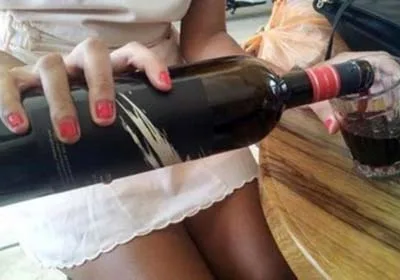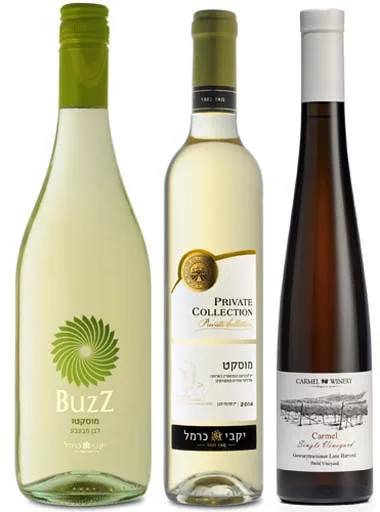The quality & variety of Israel’s wines remains one of its best-kept secrets.
Many of Israel’s wines more than match up to the best international standards and the finest are undoubtedly world class. I am not alone in being complimentary! Israeli wineries are winning trophies and gold medals in some of the world’s major wine tasting competitions and receiving high scores from some of the world’s most famous wine critics.
Two of the world’s most famous wine critics have also noticed the changes. Hugh Johnson, the world’s most famous wine writer, wrote : “Recently with plantings of classic varieties in high altitude regions, a wine revolution took root. Continued investment in modern technology & international trained winemakers, have had dramatic effects.” Robert Parker, the world’s most famous wine critic wrote about Israeli wines: “The wines…..are getting better all the time and some of them are superb”.
Israel already has a worldwide reputation for its agriculture and technology, which really come together in its vineyard management. It will take a great deal of work and many more blind tastings for Israel to receive a similar image for its wines, but when it does it will be richly deserved. The passion and expertise of the growers and winemakers, and the ambitions and investments of winery owners have together managed to develop a quality wine industry in a way inconceivable even only 20 years ago.
As one of the very first countries to make wine, Israel has an ancient winemaking history and evidence of this is found in its archaeology, religious practices and literature. The importance of wine and land of Israel, has accompanied the people of Israel since the time of Noah. Wine is like a thread which connects the dawn of the Jewish people with modern Israel.
In modern times, Israeli wine has gone through four wine revolutions. The first was the founding of a new Israeli wine industry in the late 19th century by Baron Edmond de Rothschild, owner of the famous Château Lafite Rothschild in Bordeaux, using French knowledge & tradition. The first winemaker was from Bordeaux and the winemaking consultant and viticulturists were all French.
Secondly was the quality revolution, which began with the import of expertise from California in the 1980’s. This brought with it New World technology and the answers of how to make quality wine in hot countries. The winemakers and consultant that initially brought about the change were from California and had studied at UC Davis.
The boutique winery boom began in the 1990’s. Numerous boutique wineries, garagistes and domestic wineries were founded giving the Israel wine scene depth, color and enormous variety. This is a trend which shows no sign of abating.
The 2000’s witnessed the turnaround of Israel’s larger wineries, which reacted to the new competition by investing in quality. The names of larger wineries were changed from Carmel Mizrahi, Eliaz, Efrat and Askalon-Carmei Zion, to Carmel Winery, Binyamina, Teperberg and Segal Wines, to reflect the change of focus.
Today the wine drinker has the opportunity to choose wines made from all the major international grape varieties. Wines of different styles are available to suit all price points. The wine buyer is able to choose wine made from vineyards in the desert in the south to the hills in the far north.
For a country which would comfortably fit into Wales or New Jersey, Israel boasts an extraordinary range of microclimates – and each region is host to winemakers & growers attempting to make wine reflecting their local terroir. There are also an astonishing number of wineries. If there are 50 wineries harvesting over 50 metric tons of grapes a year, ranging from the large commercial operations to boutique wineries, there are a further 250 small boutique wineries or domestic garagistes who are making wine with pride & passion.
Amongst other things, Succot is a festival which celebrates the wine grape harvest. In times gone by, girls would go out to the vineyards, dressed in white, to frolic and dance, and hopefully attract a good match in the form of a future husband.
These days, Succot is a time for visiting wineries and sampling the fruit of the vine in liquid form. I urge you not to sit on the sidelines, but to become an active participant in the exciting blossoming of the Israeli wine scene. I recommend that you see the country through the prism of its wine industry. Whether your interest is history, people, religion, gastronomy or wine, you can really get to know Israel through its wine regions, wineries & wines.
Many countries have a Wine Route. Possibly the most beautiful in the world is in South Africa; perhaps the most famous is Napa Valley in California. Now we have our own. There is plenty to see… and taste!
I suggest that you visit two wineries a day and certainly no more than three, leaving time for food, schmoozing, toilet breaks and shopping. The biggest mistake organizers make, is trying to cram too much into a day. It is suggested to choose wineries carefully, so they are not too similar. Remember a stainless steel tank and wooden barrel will look similar wherever you go! Always, always, book in advance to avoid disappointment.
The day should also include a visit to a vineyard which simply puts everything in context. It could be a hike through a vineyard area, taking time for a picnic or simply stopping to take in the view for a few moments.
In the Golan Heights, I recommend a visit to the Golan Heights Winery, the nearest we have to a Napa Valley winery, the rather grand Chateau Golan or Mount Odem, Israel’s most northern winery.
The Galilee is big, so I would divide it up. In the Upper Galilee, I would recommend Dalton and Adir, both on the same estate, or Galil Mountain and Ramat Naftali. In the Western Galilee, both the Stern family winery and Kishor, a quality winery in a unique setting, are worth a visit. In the Lower Galilee, Tabor, Israel’s 5th largest winery in the shadow of Mount Tabor, is a must along with Netofa, specialists in Mediterranean varieties or Tulip, the winery with special needs workers, as other options.
In the Mount Carmel region I would visit Carmel Winery at Zichron Ya’acov for its history. It is the only winery in the whole of Israel that can give a real insight into our wine history. I would then visit Tishbi for its splendid food initiatives, especially the chocolate, and Amphorae for its beauty.
In the Sharon Plain and central coast, I recommend the award winning Recanati, the new winery building at Vitkin, or the small Benhaim family winery as worthwhile venues.
In the Judean Shefela, the Barkan’s beautiful visitors center at Hulda, and Karmei Yosef- Bravdo’s estate winery provide great contrasts for a day’s outing. In the Judean Foothills, Flam and Tzora provide a quality wine experience for small groups. Then there is the peerless Castel and a garagiste called Sea Horse in the Judean Hills.
In the central mountains, which run down the spine of the country, there are numerous places to see. Tura is a quality winery in a Biblical setting. Psagot has a wonderful visitors center, and one of the wineries consistently producing great wines is Gush Etzion, situated in a grand building which looks more like a synagogue than a winery.
In the Negev, I would recommend visiting Yatir Winery at Tel Arad, arguably the finest winery situated in the south of Israel, or Midbar at Arad, a quality winery which specializes in wines sourced only from Negev vineyards. Alternatively, a visit to the Ramat Negev Winery at Kadesh Barnea would impress you. Fascinating to hear how Midbar and Ramat Negev are making the desert flow with wine.
If you choose to stay in Tel Aviv, I would recommend visiting the HaEretz Museum to see the display of wine presses from different eras and the Rothschild pavilion which tells the story of Baron Edmond de Rothschild. I would then visit Derech Ha’Yayin in Hashmonaim Street, the Sarona Market and the finish up in Tasting Room, an innovative wine paradise.
Alternatively you may choose to explore Israel wine country at your leisure by visiting restaurants and wine bars, being sure of course to drink only Israeli wine. However you decide to spend your Succot holiday, be prepared to be pleasantly surprised by the quality and variety of Israeli wine. Devoting a day of your holiday to wine will undoubtedly leave you with a great sense of pride in our wines, winemakers and growers.
Le’haim!! To Life!!




